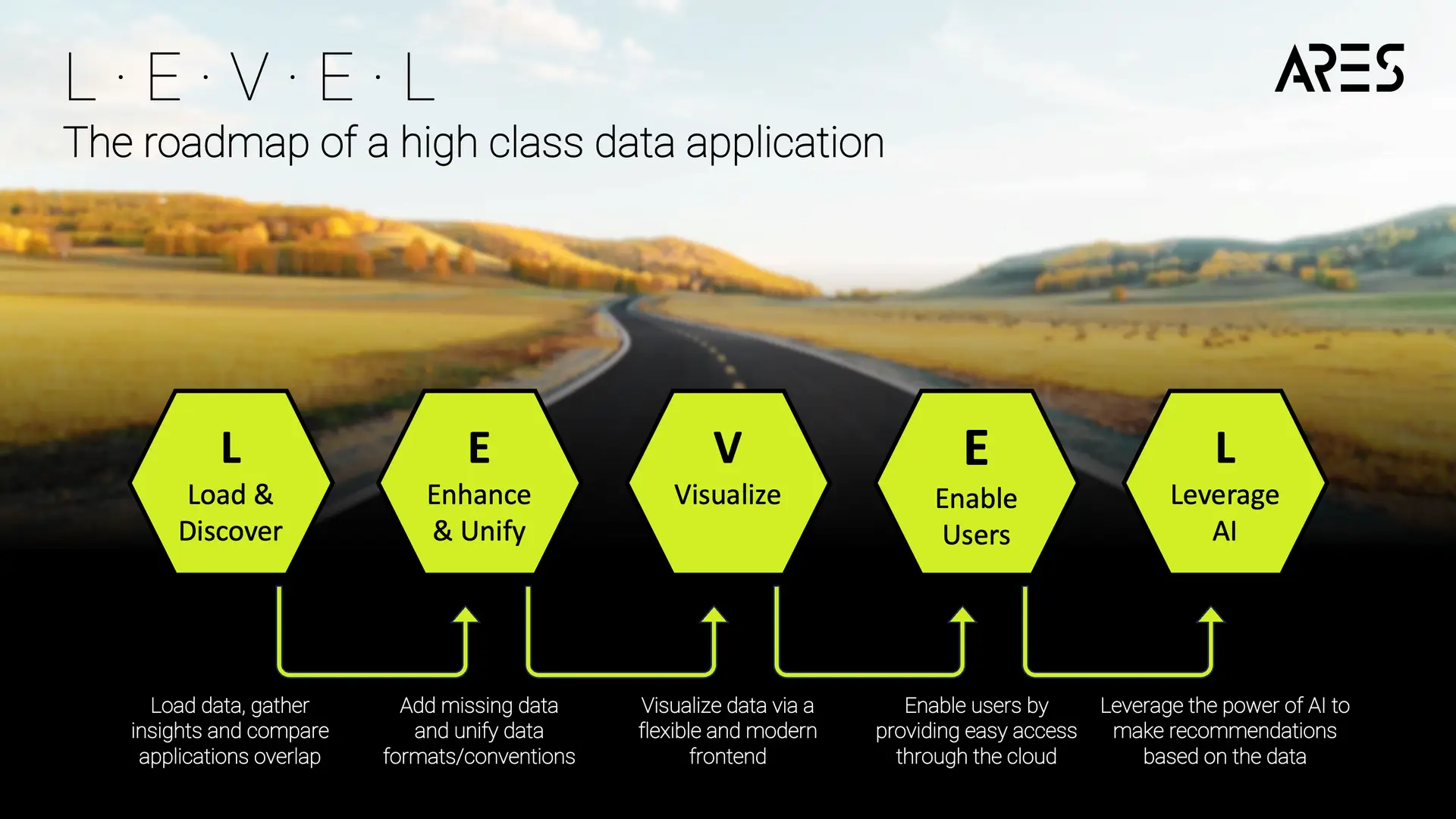The L·E·V·E·L framework is a concept developed by ARES Consulting GmbH to consistently deliver value-oriented data applications for our clients. ARES is a Cloud Native consultancy from Munich, Germany and provides cloud and development services to mid-size, corporate and goverment entities. We strongly believe in Cloud Native setups and help our customers to use innovative and disruptive technologies. Our core values are flexibility and agility to bring speed into any project or innovation process. You can find more information about ARES here: https://ares-consulting.de
When to use the L·E·V·E·L framework?
The concept should be used like any other framework. It is lightweight, highly flexible and should be adapted to the overall situation. Not all phases necessarily need to be covered completely to achieve a positive outcome. The concept can be used for any project size as well as big data application mergers. Here are some initial situations when the L·E·V·E·L framework can be applied:
- Your company has a big data lake, but the data is not displayed anywhere to gain insights from it.
- Your company has several data applications that show partially overlapping data to internal users. There is no single source of truth.
- Your company is displaying product data to potential leads, but the leads are not converting into customers.
- Your company is transforming data, but the predefined purpose is not achieved.
- Your company is displaying data to a certain user group, but the users don’t know how to act based on that data.
Load & Discover
The first phase of the framework is essential when building a successful data application. Our goal in this phase is to get an overview of the existing application landscape and to gather information which application displays which type of data. In case there is a bigger application landscape every stakeholder should be interviewed to understand the different views each application provides. With this approach we make sure that every stakeholder in the project is going to be satisfied with the outcome.
Enhance & Unify
During the integration of various data sources, it’s not uncommon to encounter overlapping information. However, this overlap may not always present consistency, suggesting the potential need to establish a specific data convention. It’s important to note that this step is not always obligatory and can occasionally be executed at a later phase of the project.
Visualize
Several individuals perceive data visualization as one of the most substantial challenges of the current century, a notion with which we cannot dispute. Absent an appropriate front-end presentation for the user to optimally display the data, all prior developmental efforts will fail to generate value for the organization. Evidently, there’s more to consider than just an appealing front-end interface. The underlying technology must also function impeccably to deliver a swift and gratifying user experience. It is only under these conditions that user adoption will be high and the application will be able to produce the maximum potential outcome.
Enable Users
The times when data application were required to be downloaded should lay way in the past. Thus, accessing your data, regardless of your location – be it at the office, home, or during a client meeting – should be as uncomplicated as navigating to a website. Ensuring this web application’s scalability, accessibility, and security is of utmost importance, particularly when it showcases your most valuable asset: Data! To address these challenges, a cloud-native strategy can be implemented by adhering to the five pivotal principles of cloud-native architecture: Scalability, Resiliency, Manageability, Observability, and Automation.
Leverage AI
The final stage of the L·E·V·E·L framework is not invariably a necessity, but it holds considerable merit in numerous circumstances. Given that your data has already undergone cleansing, enhancement, and harmonization, it may be prudent to capitalize on the capabilities of Artificial Intelligence (AI) to generate recommendations-based data insights that may not be readily discernible by human analysis (e.g., an AI model could be developed to monitor for any data anomalies indicative of shifts in customer behavior). The applicability of such use cases is contingent upon the data available for AI training; however, generally, this approach frequently proves instrumental in unearthing latent potentials.


